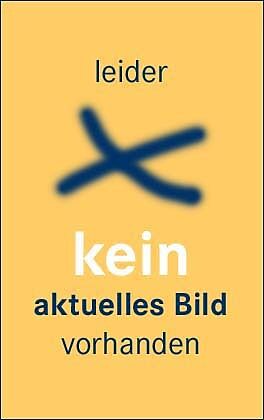Brain and Visual Perception
Einband:
Fester Einband
EAN:
9780195176186
Untertitel:
The Story of a 25-year Collaboration
Genre:
Medizin
Autor:
David H. Hubel, Wiesel Torsten N.
Herausgeber:
Oxford University Press
Anzahl Seiten:
738
Erscheinungsdatum:
11.11.2004
ISBN:
978-0-19-517618-6
This is the story of an exciting and hugely successful 25-year collaboration between two scientists. David Hubel and Torsten Wiesel set out to learn how the brain deals with the signals it receives from the eyes, and opened up a new area of brain research that led to their receiving the Nobel Prize in 1981. The book contains their major papers from 1959 to 1981, each with comments telling how and why the authors went about the study, how the work was received, and what has happened since. It begins with short autobiographies of both men, and describes the state of the field when they started. It is intended not only for neurobiologists, but for anyone interested in how the brain works - biologists, psychologists, philosophers, physicists, historians of science, and students at all levels.
Beginning around 1960, David Hubel and Torsten Wiesel took the study of the brain and its development from the realm of philosophy to biology. These papers and the commentaries that accompany them put the reader inside the heads of the scientists who gave us our modern understanding of the cerebral cortex, often by asking the next logical question, but always with appreciation for the beauty of the system.
Autorentext
David Hubel and Torsten Wiesel were both awarded the 1981 Nobel Prize in Physiology or Medicine. Torsten Wiesel is the Secretary General of the Human Frontier Science Program and President of the International Brain Research Organization.
Klappentext
Scientists' understanding of two central problems in neuroscience, psychology, and philosophy has been greatly influenced by the work of David Hubel and Torsten Wiesel: (1) What is it to see? This relates to the machinery that underlies visual perception. (2) How do we acquire the brain's
mechanisms for vision? This is the nature-nurture question as to whether the nerve connections responsible for vision are innate or whether they develop through experience in the early life of an animal or human. This is a book about the collaboration between Hubel and Wiesel, which began in 1958,
lasted until about 1982, and led to a Nobel Prize in 1981. It opens with short autobiographies of both men, describes the state of the field when they started, and tells about the beginnings of their collaboration. It emphasizes the importance of various mentors in their lives, especially Stephen
W. Kuffler, who opened up the field by studying the cat retina in 1950, and founded the department of neurobiology at Harvard Medical School, where most of their work was done. The main part of the book consists of Hubel and Wiesel's most important publications. Each reprinted paper is preceded by
a foreword that tells how they went about the research, what the difficulties and the pleasures were, and whether they felt a paper was important and why. Each is also followed by an afterword describing how the paper was received and what developments have occurred since its publication. The
reader learns things that are often absent from typical scientific publications, including whether the work was difficult, fun, personally rewarding, exhilarating, or just plain tedious. The book ends with a summing-upof the authors' view of the present state of the field. This is much more than
a collection of reprinted papers. Above all it tells the story of an unusual scientific collaboration that was hugely enjoyable and served to transform an entire branch of neurobiology. It wil
Inhalt
Part I: Introduction and biographies
1: David H. Hubel
2: Torsten N. Wiesel
Part II: Background to our research
3: Cortical neurophysiology in the 1950's
4: The group at Hopkins
5: The move from Hopkins to Harvard
6: The new department
Part III: Normal Physiology and Anatomy
7: Our first paper, on cat cortex, 1959
8: Recordings from fibers in the monkey optic nerve
9: Recordings from cells in the cat lateral geniculate
10: Our major paper on cat striate cortex, 1962
11: Recordings from the cat prestriate areas, 18 and 19
12: Survey of the monkey lateral geniculate body - a foray into colour
13: Recording fibers in the cat corpus collosum
14: Recordings in monkey striate cortex, 1968
15: Another visual representation, the cat Clare-Bishop area
17: Anatomy of the geniculo-cortical pathway: the Nauta method
18: Ocular dominance columns revealed by autoradiography
19: Regular sequences of orientation shifts in monkeys
20: Cortical modules and magnification in monkeys
Part IV: Deprivation and development
21: The first three kitten deprivation papers
22: The second group of deprivation papers
23: The siamese cat
24: Cells grouped in orientation columns in newborn monkeys
25: Plasticity and development of monkeys ocular dominance columns
Part V: Three reviews
26: Ferrier lecture, 1977
27: Nobel lecture, David H. Hubel, 1981
Nobel lecture, Torsten N. Wiesel, 1981
28: Epilogue: summing up
List of papers included
Glossary
Index
Today, 46 years after starting

Leider konnten wir für diesen Artikel keine Preise ermitteln ...
billigbuch.ch sucht jetzt für Sie die besten Angebote ...
Die aktuellen Verkaufspreise von 6 Onlineshops werden in Realtime abgefragt.
Sie können das gewünschte Produkt anschliessend direkt beim Anbieter Ihrer Wahl bestellen.
Loading...
Die aktuellen Verkaufspreise von 6 Onlineshops werden in Realtime abgefragt.
Sie können das gewünschte Produkt anschliessend direkt beim Anbieter Ihrer Wahl bestellen.
| # | Onlineshop | Preis CHF | Versand CHF | Total CHF | ||
|---|---|---|---|---|---|---|
| 1 | Seller | 0.00 | 0.00 | 0.00 |
